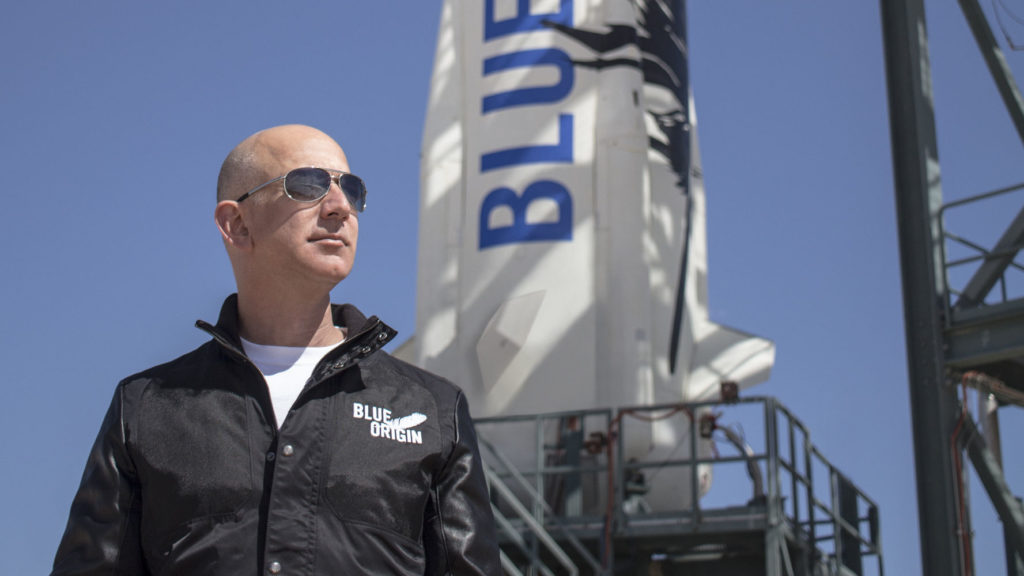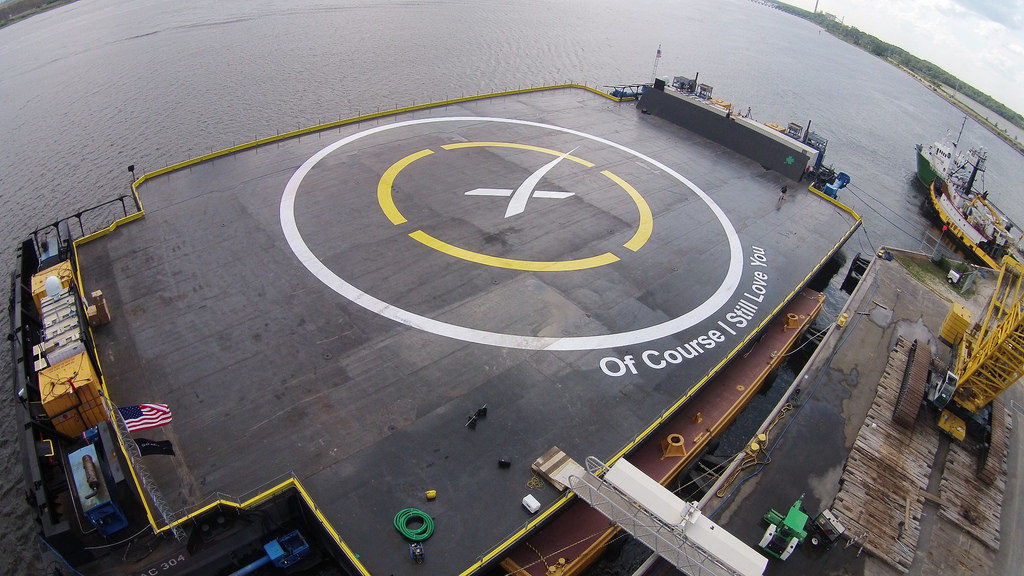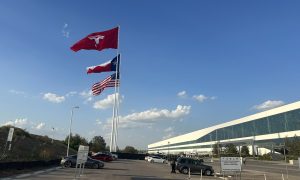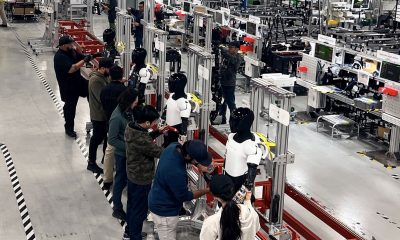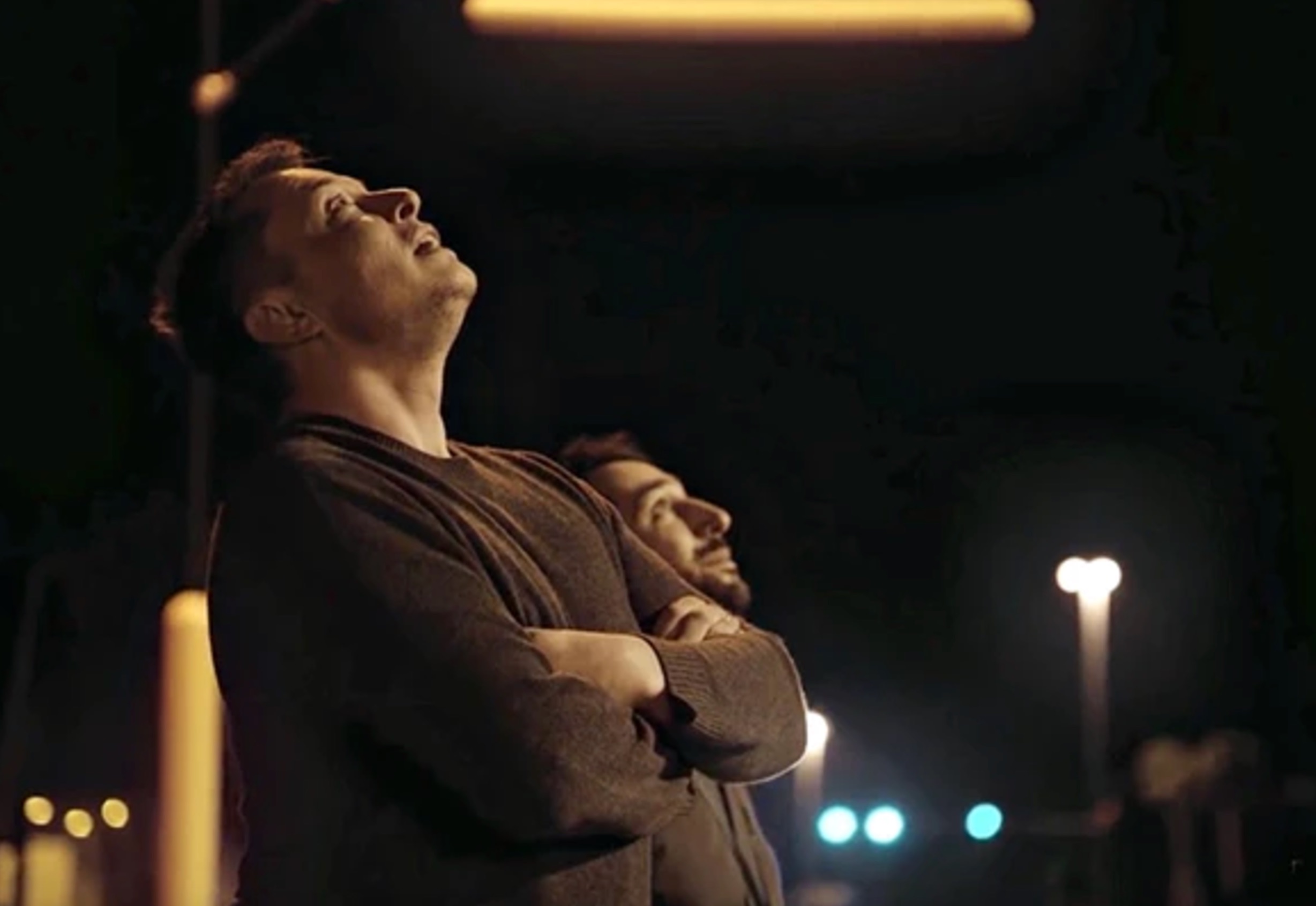

News
Does Elon Musk hold the moral high ground in the commercial space race? Jeff Bezos might disagree.
In the minds of technology-aware people around the globe, Elon Musk holds unique positions in the world of commercial spaceflight:
- Launching and landing rockets.
- Launching and landing reused rockets.
- Launching and landing private rockets funded by the paying customers of a spaceflight company founded with totally private capital.
None of that is to be taken lightly, especially considering Musk’s stated goal of colonizing Mars (and beyond?). All of that combined with the fact that SpaceX’s closest competitors are either centered on rich tourists (Virgin Galactic, Blue Origin) or almost entirely government (contract) funded (Boeing, ULA), and Elon Musk looks to have a type of moral “high ground” over other industry players with a humanity-first approach.
That might not be an entirely fair assessment, though. It’s helpful to first have the full(er) history of commercial spaceflight on hand, and second to have the long-term goals of other players in mind in order to consider where SpaceX really fits in.
A SHORT HISTORY OF COMMERCIAL SPACEFLIGHT
The commercial space industry started shortly after the first satellite was launched in 1957 when the privately-owned Telstar I satellite was put into orbit using a commercially-sponsored rocket in 1962. Congress provided the regulatory framework for such missions shortly after, and hundreds of private satellites were launched in the years following. SpaceX’s earliest predecessor, Space Services, Inc. of America (SSIA), was the first to put a privately owned and operated rocket into space, albeit not into orbit.
- Fun Fact: SSIA is now a star-naming company which has previously contracted cargo space with SpaceX.
After the government provided a better regulatory environment for commercial spaceflight in 1984, SSIA also became the first private company to acquire and use a launch license. In case you’re curious, the rocket didn’t make it to space.
Who was the first private company to make it to orbit on a privately developed rocket, then? That honor would go to Orbital Sciences Corporation (now Orbital ATK, another SpaceX contractor) in 1990, although the rocket was air launched from an airplane. That achievement was followed up by Scaled Composites’ SpaceShipOne in 2004, another air launched vehicle, although it was a rocket-powered aircraft rather than just a rocket. It still holds the title as the first and only privately-funded manned craft to reach space. Virgin Galactic has taken over its successor, SpaceShipTwo, which is still under development with the primary goal of shuttling rich tourists on suborbital thrill rides.
- Fun Fact: United Launch Alliance (ULA), SpaceX’s only bidding competitor for Air Force contracts, was actually formed only to serve government rocket launch needs after legislation was passed requiring NASA to use private spaceflight companies for non-Space Shuttle essential missions. Boeing and Lockheed Martin, traditional government space and defense contractors, came together to form the ULA venture to serve this need, and the rest is mostly guaranteed-NASA-contract-friendly history. Boeing and Lockheed Martin are also the primary contractors developing NASA’s new Space Launch System and Orion crew capsule. For these reasons, I don’t really consider ULA to be a true part of the “new space race”.
SpaceX entered the history records in 2008 when Falcon 1 reached orbit as the first privately developed liquid fueled rocket. Their record list entries have grown ever since:
- 2010, the Dragon capsule was successfully launched into orbit and recovered, making it the first private capsule to do so.
- 2012, the Dragon capsule made a successful trip to the International Space Station (ISS) as the first private spacecraft to do so.
- 2015, Falcon 9 successfully landed after returning from orbit, the first orbital rocket to do so.
- 2017, a reused Falcon 9 core was successfully launched and landed after returning from orbit, making it the first privately owned rocket to do so.
Right before SpaceX’s 2015 landing, Amazon founder Jeff Bezos finally revealed what his secretive space company, Blue Origin, had been up to. Beating SpaceX’s landing by a month, Bezos revealed footage of Blue Origins’ tourist-industry rocket, New Shepard, successfully launching into space and landing itself. The differences between the two companies’ landing achievements are notable; however, Blue Origin still walked away with first prize.
Even so, in commercial spaceflight history, SpaceX’s reputation as an innovator driving the privatization of the space industry is well deserved. But does Elon Musk get to claim a moral “high ground” given SpaceX’s autonomous origins and humanity-centric goals?
JEFF BEZOS IS A DREAMER, TOO
Blue Origin might call that designation into question. How so, especially when Blue Origin’s rocket is a tourist attraction (with no restroom or regurgitation facilities I might add)?
Well, first of all, according to Bezos it doesn’t have to just be a tourist vehicle. In a recent talk given at the 33rd annual Space Symposium, Bezos suggested that the New Shepard could be used as the first stage of another multi-stage rocket rather than just the single stage for his “Astronaut Experience” tourist adventure. That could (potentially) put New Shepard in line with Falcon 9’s customer base.
Most importantly, though, New Shepard is just the beginning of Blue Origin’s long-term goals for space travel. The engine (BE-4) for their expandable heavy launch vehicle, New Glenn, is under development and will be a prime competitor with SpaceX’s Falcon Heavy once in operation.
Back to the “high ground” question, the founder of Amazon had dreams of being a space entrepreneur way before that concept truly existed, and Bezos went into computer science knowing he needed plenty of money to reach that goal. Musk didn’t consider space technology exclusively, but rather went in as a way to be part of pushing humanity’s development forward. Purity of intent? Points for both.
Bezos himself has acknowledged that there are similarities in the goals of both SpaceX and Blue Origin, citing the two companies’ pursuit of vertical landings and quick reusability as the primary ones. For a time, SpaceX was unique in the “new space” arena by not using space tourism as a funding mechanism, but now that they’ve announced their contract to take some very rich customers on a trip around the Moon, they’ve lost that designation. What’s more, Blue Origin has also announced their own Moon program, but it will be to assist with cargo needs for development of a permanent Moon base.
Plus one for Blue Origin.
Both SpaceX and Blue Origin were founded with private funds, and the funding for their developments to date come from a mix of both government and private sources. Technically, Blue Origin is almost entirely privately funded, but they received two rounds of funding from NASA as part of their Commercial Crew Development program that can’t be ignored. Also, their contract with ULA to develop the BE-4 engine (to be used on both Blue Origin’s New Glenn rocket series and ULA’s upcoming Vulcan rocket) makes the designation murky. ULA only launches rockets for government cargo, so whether the money Blue Origin receives from them is truly “private” is a matter of money-trail opinion. On a further note, Bezos has pledged to invest an annual billion dollars of his own funds into Blue Origin.
Plus one for Blue Origin, but plus two for SpaceX for already running a viable, profitable space launch company with plenty of private customers.
What about Mars? Well, Elon Musk has made it no secret that Mars is the primary goal of SpaceX’s technology achievements, and he really, really wants to settle humans there to save the species from potential future disaster. Bezos, on the other hand, has likened the purpose of going to Mars as “because it’s cool”. However, Bezos also wants to do all the “heavy lifting” in building the infrastructure necessary for space commercialization to take off. He used the existing Internet and shipping systems to build Amazon, so now he wants to build the Internet and shipping system equivalents in space with Blue Origin’s technology.
Plus one for both, and I think that means the two are even.
MORAL HIGH GROUND?
The answer to the question of moral standing is then, of course, entirely based on one’s opinion of the future of human spaceflight and the roles we should pursue outside of our home planet. Also as an honorable mention for consideration is one’s economic persuasion in the form of a “chicken or the egg” scenario.
Government has taken us to space and enabled a booming satellite communications market, but we haven’t even returned to the Moon since 1972. Would a privatized space industry have us on Mars already? We can further consider that NASA gave us memory foam, Tang, and underwater pens; however, would better, cheaper versions been developed on their own in the commercial sector as the need for such products for Earth-based activities developed independent of government projects?
Once again returning to the question of a greater-purpose-driven space program, does space tourism lead to trickle-down space exploration, i.e., eventual space travel for the average citizen? Or will it take an “infrastructure first” approach to really make that sort of space travel be a reality?
If a space company claims that its long-term goal is to benefit the future of human kind, the use of space tourism certainly looks to be economically justified as a funding mechanism. But does that then mean that the future of humanity in space is being bred on the “bread” (sorry) of the super-rich?
While it wouldn’t be the first time an industry grew in such a way, there exists a population of folks that prefer a little more “purity” in their spaceflight. Yours truly happens to be such a crab, but I also acknowledge that such sentiments come from growing up only knowing space as taught by a science-centric NASA. Space has always been cool because it gives us a broader perspective of our place in the universe. I never fantasized about opening the first deep space McDonald’s (or Rudy Tyler’s Burger Shack if you understand a bad Space Camp movie reference).
Elon Musk was a game changer in the commercial space world by pursuing rockets as a means of bettering humanity. That gave him a “one-up” over Jeff Bezos and Blue Origin for the purist crowd. Now that SpaceX has added millionaire Moon tourism to its manifest, however, and Blue Origin is moving along into non-tourist space developments to build infrastructure, the field is evening out. It’s also prudent to mention that there are many other rocket companies out there developing private vehicles that we’ll be hearing from eventually.
COMING UP
So what’s up next for SpaceX? The Hawthorne-based rocket company will be back to its regularly scheduled history-making programming this summer with the launch of Falcon Heavy, and later this year Crew Dragon is set to launch, making SpaceX one step closer to launching American astronauts on American soil.
First up, however, Falcon 9 will launch on April 30th, carrying NROL-76 into a secretive orbit from SpaceX’s refurbished Apollo pad, Launch Complex 39A at Kennedy Space Center in Florida. Not many other details are available about payload, though. It’s for the National Reconnaissance Office, so publicly available information is slim. We should see the first stage make a ground landing as consolation – fingers crossed the video doesn’t cut out!
We can also add this launch to the history books again for SpaceX. This is the first payload SpaceX will have ever launched for the U.S. Department of Defense, having beaten ULA for the contract after threatening to sue the Air Force for the right to bid. Watch out, traditional government launch contractors. SpaceX is moving in to your turf. When Blue Origin is ready to start the bidding war, it will be interesting to see how they work out that ULA relationship.
Stay tuned!
Elon Musk
Tesla investors will be shocked by Jim Cramer’s latest assessment
Jim Cramer is now speaking positively about Tesla, especially in terms of its Robotaxi performance and its perception as a company.
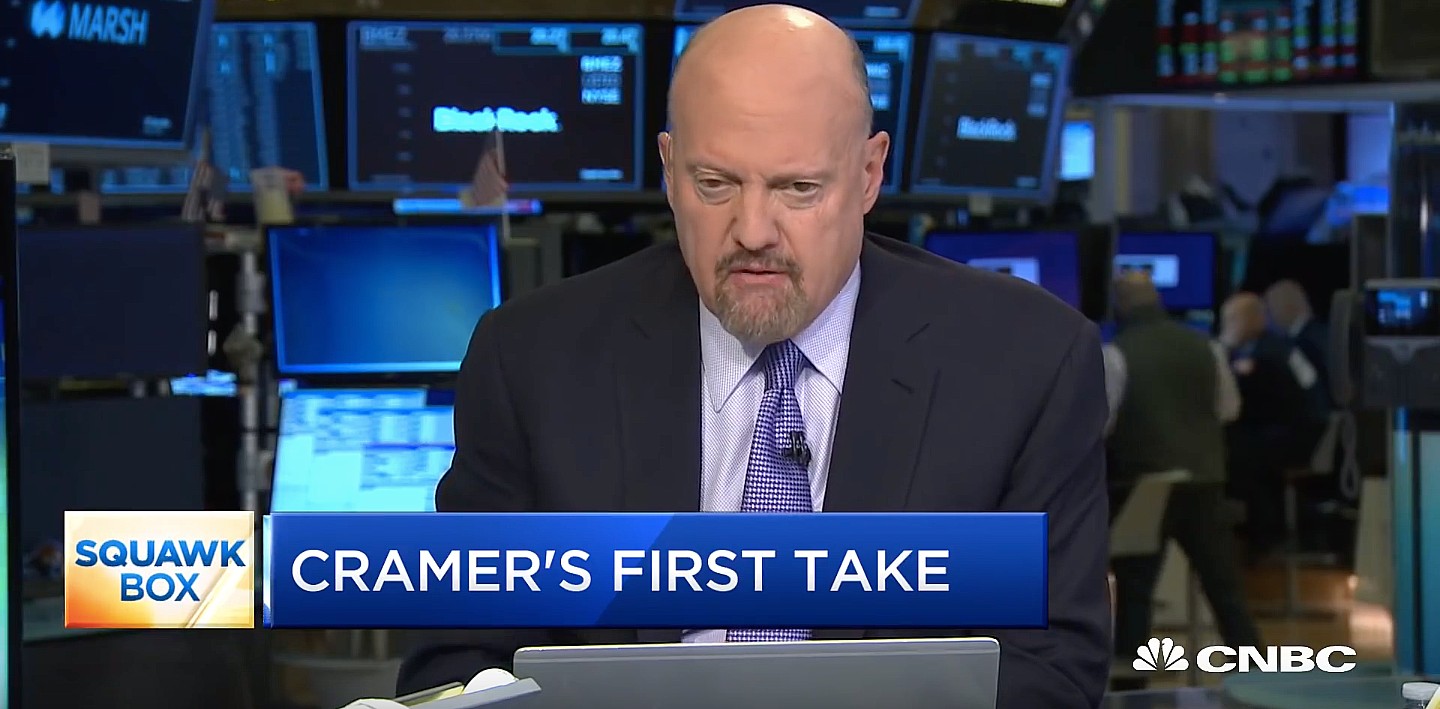
Tesla investors will be shocked by analyst Jim Cramer’s latest assessment of the company.
When it comes to Tesla analysts, many of them are consistent. The bulls usually stay the bulls, and the bears usually stay the bears. The notable analysts on each side are Dan Ives and Adam Jonas for the bulls, and Gordon Johnson for the bears.
Jim Cramer is one analyst who does not necessarily fit this mold. Cramer, who hosts CNBC’s Mad Money, has switched his opinion on Tesla stock (NASDAQ: TSLA) many times.
He has been bullish, like he was when he said the stock was a “sleeping giant” two years ago, and he has been bearish, like he was when he said there was “nothing magnificent” about the company just a few months ago.
Now, he is back to being a bull.
Cramer’s comments were related to two key points: how NVIDIA CEO Jensen Huang describes Tesla after working closely with the Company through their transactions, and how it is not a car company, as well as the recent launch of the Robotaxi fleet.
Jensen Huang’s Tesla Narrative
Cramer says that the narrative on quarterly and annual deliveries is overblown, and those who continue to worry about Tesla’s performance on that metric are misled.
“It’s not a car company,” he said.
He went on to say that people like Huang speak highly of Tesla, and that should be enough to deter any true skepticism:
“I believe what Musk says cause Musk is working with Jensen and Jensen’s telling me what’s happening on the other side is pretty amazing.”
Tesla self-driving development gets huge compliment from NVIDIA CEO
Robotaxi Launch
Many media outlets are being extremely negative regarding the early rollout of Tesla’s Robotaxi platform in Austin, Texas.
There have been a handful of small issues, but nothing significant. Cramer says that humans make mistakes in vehicles too, yet, when Tesla’s test phase of the Robotaxi does it, it’s front page news and needs to be magnified.
He said:
“Look, I mean, drivers make mistakes all the time. Why should we hold Tesla to a standard where there can be no mistakes?”
It’s refreshing to hear Cramer speak logically about the Robotaxi fleet, as Tesla has taken every measure to ensure there are no mishaps. There are safety monitors in the passenger seat, and the area of travel is limited, confined to a small number of people.
Tesla is still improving and hopes to remove teleoperators and safety monitors slowly, as CEO Elon Musk said more freedom could be granted within one or two months.
News
Tesla launches ultra-fast V4 Superchargers in China for the first time
Tesla has V4 Superchargers rolling out in China for the first time.
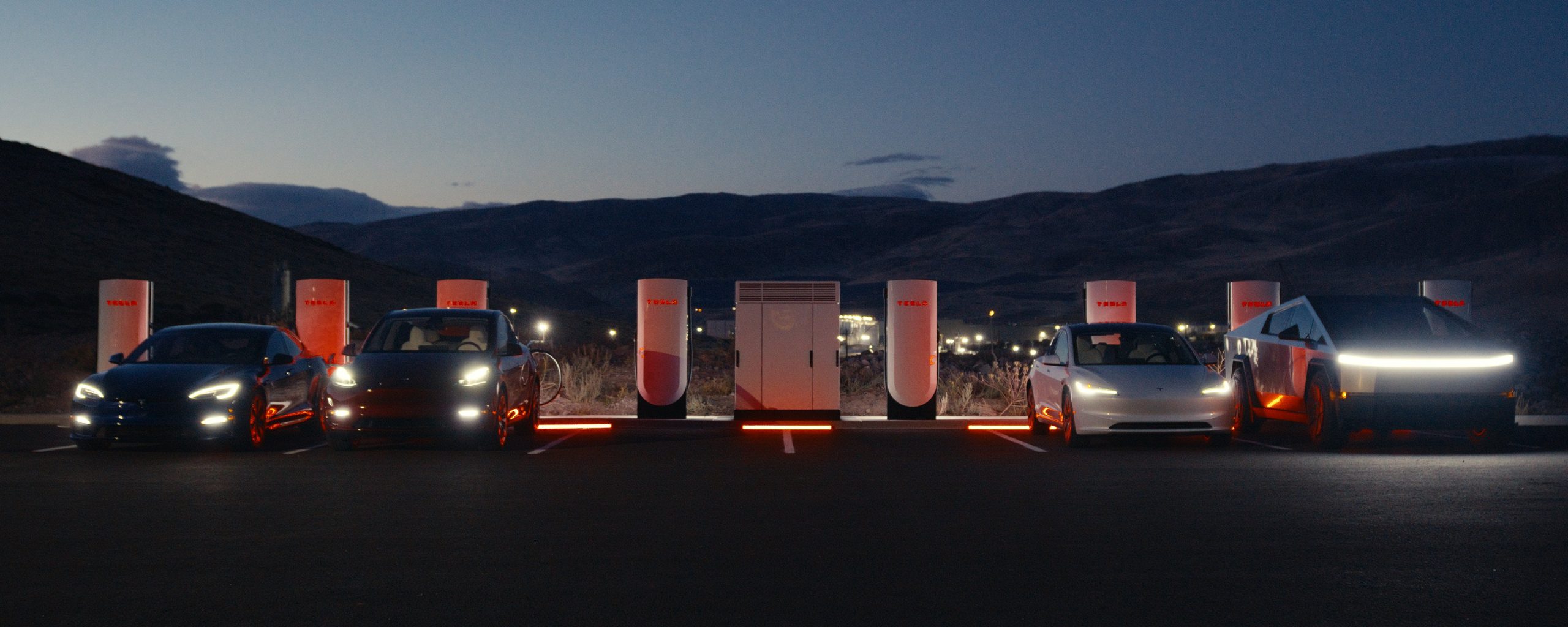
Tesla already has nearly 12,000 Supercharger piles across mainland China. However, the company just initiated the rollout of the ultra-fast V4 Superchargers in China for the first time, bringing its quick-charging piles to the country for the first time since their launch last year.
The first batch of V4 Superchargers is now officially up and running in China, the company announced in a post on Chinese social media outlet Weibo today.
The company said in the post:
“The first batch of Tesla V4 Superchargers are online. Covering more service areas, high-speed charging is more convenient, and six-layer powerful protection such as rain and waterproof makes charging very safe. Simultaneously open to non-Tesla vehicles, and other brands of vehicles can also be charged. There are more than 70,000 Tesla Superchargers worldwide. The charging network layout covers 100% of the provincial capitals and municipalities in mainland China. More V4 Superchargers will be put into use across the country. Optimize the charging experience and improve energy replenishment efficiency. Tesla will accompany you to the mountains, rivers, lakes, and seas with pure electricity!”
The first V4 Superchargers Tesla installed in China are available in four cities across the country: Shanghai, Zhejiang, Gansu, and Chongqing.
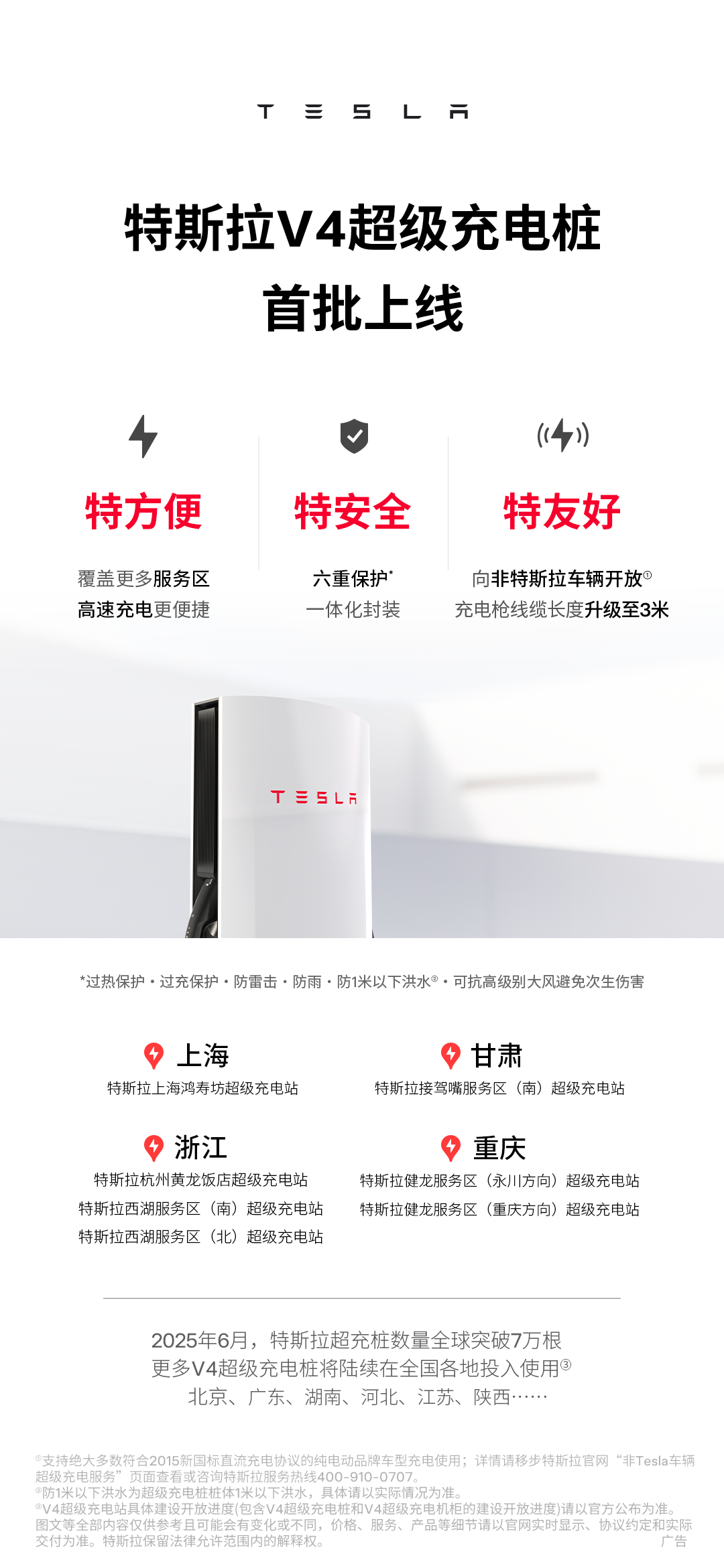
Credit: Tesla China
Tesla has over 70,000 Superchargers worldwide. It is the most expansive and robust EV charging network in the world. It’s the main reason why so many companies have chosen to adopt Tesla’s charging connector in North America and Europe.
In China, some EVs can use Tesla Superchargers as well.
The V4 Supercharger is capable of charging vehicles at speeds of up to 325kW for vehicles in North America. This equates to over 1,000 miles per hour of charging.
Elon Musk
Elon Musk hints at when Tesla could reduce Safety Monitors from Robotaxi
Tesla could be reducing Safety Monitors from Robotaxi within ‘a month or two,’ CEO Elon Musk says.
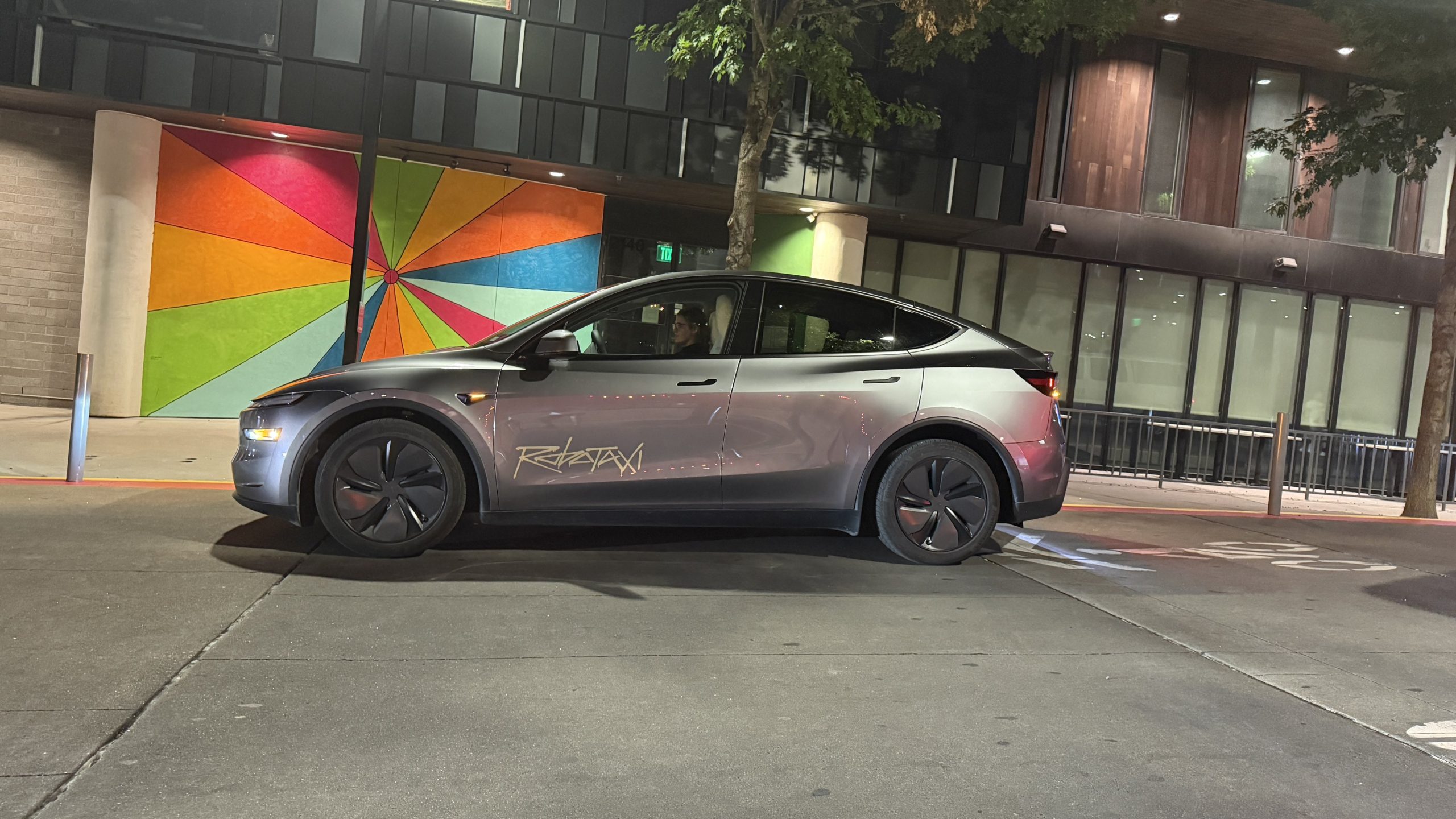
Elon Musk hinted at when Tesla could begin reducing Safety Monitors from its Robotaxis. Safety Monitors are Tesla employees who sit in the front passenger seat during the driverless rides, and are there to ensure safety for occupants during the earliest rides.
Tesla launched its Robotaxi fleet in Austin last Sunday, and after eight days, videos and reviews from those who have ridden in the driverless vehicles have shown that the suite is safe, accurate, and well coordinated. However, there have been a few hiccups, but nothing that has put anyone’s safety in danger.
A vast majority — close to all of the rides — at least according to those who have ridden in the Robotaxi, have been performed without any real need for human intervention. We reported on what was the first intervention last week, as a Safety Monitor had to step in and stop the vehicle in a strange interaction with a UPS truck.
Watch the first true Tesla Robotaxi intervention by safety monitor
The Tesla and UPS delivery truck were going for the same street parking space, and the Tesla began to turn into it. The UPS driver parallel parked into the spot, which was much smaller than his truck. It seemed to be more of an instance of human error instead of the Robotaxi making the wrong move. This is something that the driverless cars will have to deal with because humans are aggressive and sometimes make moves they should not.
The Safety Monitors have not been too active in the vehicles. After all, we’ve only seen that single instance of an intervention. There was also an issue with the sun, when the Tesla braked abnormally due to the glare, but this was an instance where the car handled the scenario and proceeded normally.
With the Robotaxi fleet operating impressively, some are wondering when Tesla will begin scaling back both the Safety Monitors and Teleoperators that it is using to ensure safety with these early rides.
CEO Elon Musk answered the inquiry by stating, “As soon as we feel it is safe to do so. Probably within a month or two.”
As soon as we feel it is safe to do so.
Probably within a month or two. We continue to improve the Tesla AI with each mile driven.
— Elon Musk (@elonmusk) June 30, 2025
Musk’s response seems to confirm that there will be fewer Teleoperators and Safety Monitors in the coming months, but there will still be some within the fleet to ensure safety. Eventually, that number will get to zero.
Reaching a point where Tesla’s Robotaxi is driverless will be another significant milestone for the company and its path to fully autonomous ride-sharing.
Eventually, Tesla will roll out these capabilities to consumer-owned vehicles, offering them a path to generate revenue as their car operates autonomously and completes rides.
For now, Tesla is focusing on perfecting the area of Austin where it is currently offering driverless rides for just $4.20 to a small group of people.
-

 News5 days ago
News5 days agoTesla Robotaxi’s biggest challenge seems to be this one thing
-
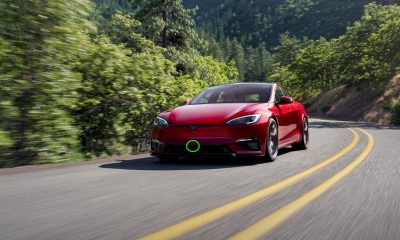
 News2 weeks ago
News2 weeks agoTesla confirms massive hardware change for autonomy improvement
-

 Elon Musk2 weeks ago
Elon Musk2 weeks agoElon Musk slams Bloomberg’s shocking xAI cash burn claims
-
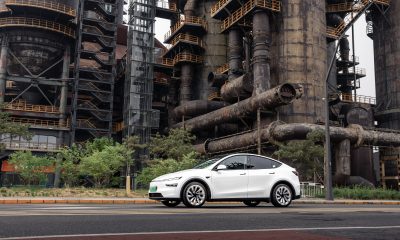
 News2 weeks ago
News2 weeks agoTesla China roars back with highest vehicle registrations this Q2 so far
-
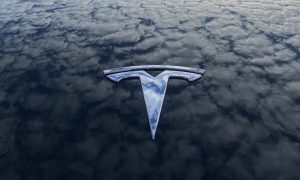
 News2 weeks ago
News2 weeks agoTesla features used to flunk 16-year-old’s driver license test
-

 News2 weeks ago
News2 weeks agoTexas lawmakers urge Tesla to delay Austin robotaxi launch to September
-

 News2 weeks ago
News2 weeks agoTesla dominates Cars.com’s Made in America Index with clean sweep
-

 News2 weeks ago
News2 weeks agoTesla’s Grok integration will be more realistic with this cool feature

